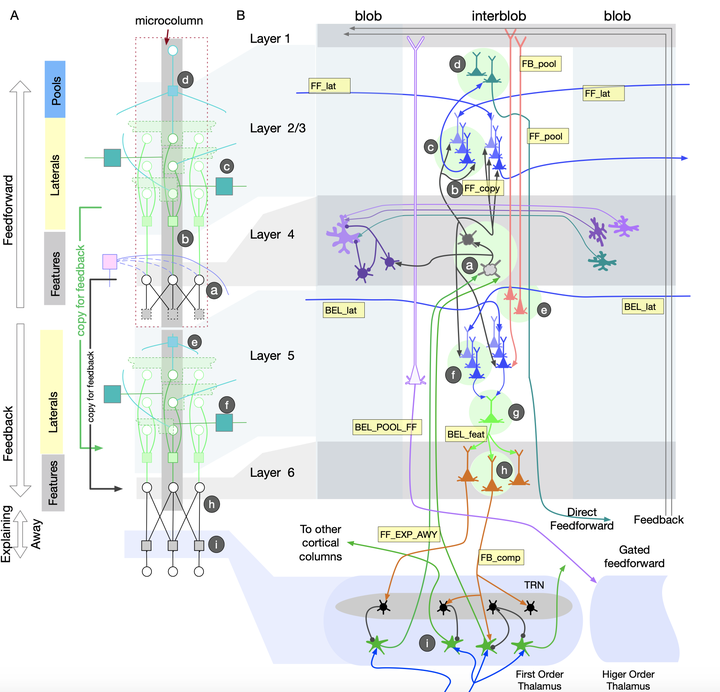A detailed mathematical theory of thalamic and cortical microcircuits based on inference in a generative vision model

Abstract
Understanding the information processing roles of cortical circuits is an outstanding problem in neuroscience and artificial intelligence. Theory-driven efforts will be required to tease apart the functional logic of cortical circuits from the vast amounts of experimental data on cortical connectivity and physiology. Although the theoretical setting of Bayesian inference has been suggested as a framework for understanding cortical computation, making precise and falsifiable biological mappings need models that tackle the challenge of real world tasks. Based on a recent generative model, Recursive Cortical Networks, that demonstrated excellent performance on visual task benchmarks, we derive a family of anatomically instantiated and functional cortical circuit models. Efficient inference and generalization guided the representational choices in the original computational model. The cortical circuit model is derived by systematically comparing the computational requirements of this model with known anatomical constraints. The derived model suggests precise functional roles for the feed-forward, feedback, and lateral connections observed in different laminae and columns, assigns a computational role for the path through the thalamus, predicts the interactions between blobs and inter-blobs, and offers an algorithmic explanation for the innate inter-laminar connectivity between clonal neurons within a cortical column. The model also explains several visual phenomena, including the subjective contour effect, and neon-color spreading effect, with circuit-level precision. Our work paves a new path forward in understanding the logic of cortical and thalamic circuits.